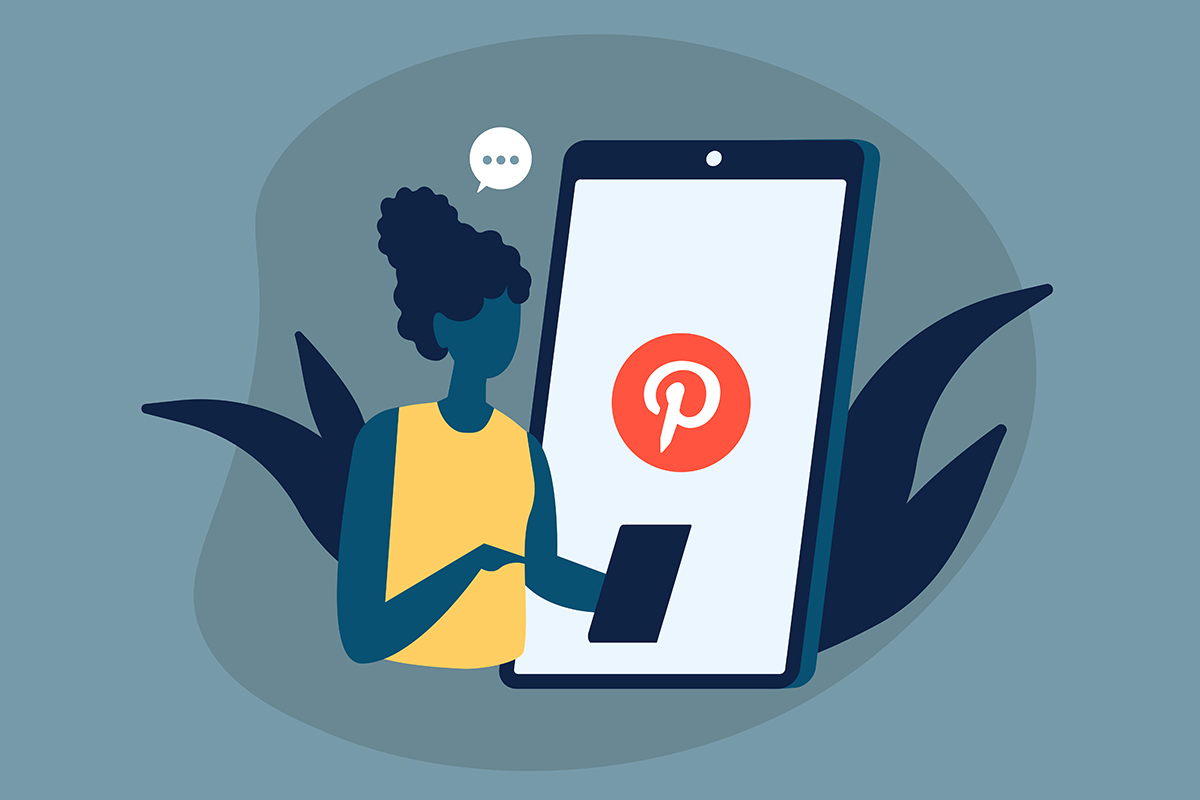
5 Reasons Why (And 5 Ways How) to Use Pinterest
More than 445 million people use Pinterest each month, looking to share and discover. And with 3/4 of weekly Pinterest users saying they’re always shopping thanks to the platform’s continuous scrolling feature, it’s clear the platform exerts major influence over which brands people shop, what products they buy, and the amount they spend. Depending on your target audience, this powerful content discovery platform could be a great fit for you. To find out, and to learn basic tips on using Pinterest, read on. 
Why Should My Brand Use Pinterest?
- It’s a huge spot for sharing. Although all social channels encourage sharing among friends and followers, Pinterest takes it to the next level. Pinterest posts have the longest lifespan, meaning your posts will generate engagement longer. On Facebook, for example, your post may live for five hours…and once engagement slows on that post, it’s unlikely you’ll see it bounce back. But on Pinterest, posts have a lifespan of 6 months, and content is evergreen. 80% of Pinned content is re-Pinned, meaning your content gets shared over and over as time goes on.
- It’s inspiring. One of the most common reasons users come to Pinterest is inspiration. They want to find and share new ideas, which suggests they’re more open to investigating a new brand, concept, or product. And compared to other social platforms, Pinterest is better at influencing the shopping decisions of its regular users. In fact, Pinterest users are seven times more likely to say it’s the most influential platform in their purchase journey.
- It’s free. Like many social channels, Pinterest offers options for paid and promoted Pins. However, you don’t need to pay to play for Pinterest success, so it’s a good option for marketers with smaller budgets, especially considering the platform’s significant organic reach. You can certainly run a paid campaign on Pinterest to boost your exposure. The site’s ad platform is straightforward to use, but ads are not necessary to make your Pins show up.
- It’s easy to track your success. Pinterest Analytics helps you keep tabs on your campaign and get to know your audience better. This tool spotlights the demographics and common interests of your audience, helping you communicate with them more strategically. Here are just a few of the metrics you can track and how they can elevate your Pinterest experience:
- Overall presence (see earned engagement for your Pins)
- Account insights (see how people interact with the content they save from your account)
- Top Pins (view your best-performing Pins to build content and create a better posting strategy)
- Audience insights (learn which topics your audience is interested in based on their Pinterest behavior)
- It boosts your SEO. While Pinterest is a social platform, it’s also a search engine. Users discover content by typing keywords and short phrases into the search bar. Like Google, using the right keywords will help your content reach the right audience. In addition to showing up in more searches on Pinterest itself, the right keywords increase the likelihood you’ll show up in Google searches as well, expanding your content’s reach across the board.

Ok, I’m on board. How do I get started?
Like any social media platform, Pinterest is a space where dedication, creativity, and originality = success. Focus on Pinning relevant and inspiring Pins for your audience, and keep Pinterest’s female-dominated user base in mind. Additionally, make sure to share and like the Pins of others just as much as (if not more than!) your own content. With these tips in mind, let’s dive into Pinterest 101:
- How can I get discovered on Pinterest? To get started and extend your reach on Pinterest, you first need to set up your account. Follow these setup best practices to boost your chance of being discovered not just on Pinterest, but all over the web:
- Choose a branded profile image, preferably a logo.
- Make sure your display name is your brand name.
- Utilize relevant keywords in your profile description.
- Link back to your website and other social accounts.
- Include a visually stimulating cover photo.
- What are Pins and how do they work? Pins are visual bookmarks that people use to save content they love. Whether the content is static or video-enhanced, Pins are made to share and re-share over and over again. No matter how a Pin is created or shared, it will almost always link back to its original source–so if a user Pins an image from your brand’s website, you’ll continue to enjoy referral traffic as the Pin is shared among users. Here’s how you can create eye-catching pins users can’t help but share:
- Search Pinterest for keywords relating to your brand and take note of what you’re drawn to.
- Post vertical, 2:3 static images and/or videos.
- Make sure your image/video file name uses keywords Google can recognize to boost SEO.
- Use vibrant, clean colors and legible fonts.
- Minimize text overlay, but subtly include your logo, brand name, or website for further discoverability.
- Convey your brand voice and subtly prompt action.
- Keep video Pins to 15 seconds, select a strong cover image clip, and don’t rely on sound.
- How do I write the text that accompanies a Pin? Your Pins are accompanied by a title and a description, both of which can make or break your brand visibility. The title can be 100 characters and the description can be 500, but only the first 50 or so will appear. Here’s how to make the most of your limited text space:
- Include your brand name, relevant keywords, and a call to action.
- Utilize hashtags–Pinterest allows you to add up to 20.
- Utilize niche messaging to boost relevance.
- What are Pin boards? Pinterest allows businesses to create Pin boards when using the app on mobile devices. Pin boards are where your Pins “live.” They’re a great way to categorize your different content buckets within the platform. They’re also a way for your audience to follow specific interests without having to follow everything you Pin. Keep your Pin boards organized and discoverable with these tips:
- Board names should be short and relevant so they are easily found in searches.
- Board descriptions should be 1-2 sentences consisting of relevant, short-tail keyword search phrases.
- Aim for 10-15 boards with at least 30 Pins on each board.
- How do I connect with others? When it comes to building your audience on Pinterest, consistency is key. Pin a few things over a longer period versus pushing all your content live at once. And with Pinterest’s schedule-in-advance options, you can schedule up to 30 Pins within your queue up to 2 weeks in advance. It’s easy to pop in every few days to make something live on your channel. You can create a Pin from the platform or share directly from your website with the help of a browser add-on button. You can even share images directly from your cell phone! All that matters is that you’re actively sharing.
These basics will get you started with Pinterest, but there’s a whole lot more to discover. Reach out to the experts at Zehnder for more Pinterest best practices and strategy assistance. Boost your visibility and drive significant traffic to your site!






